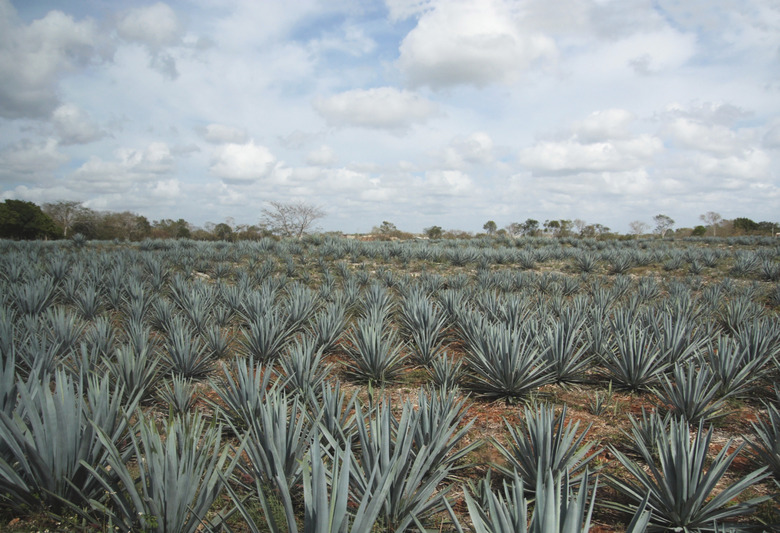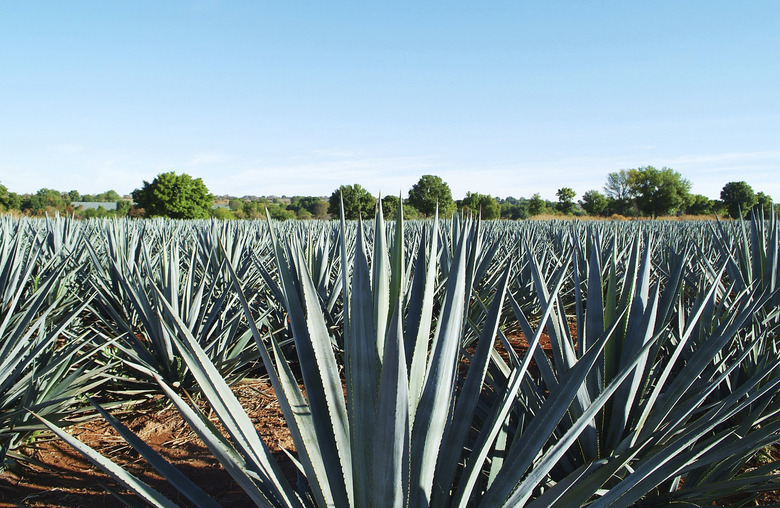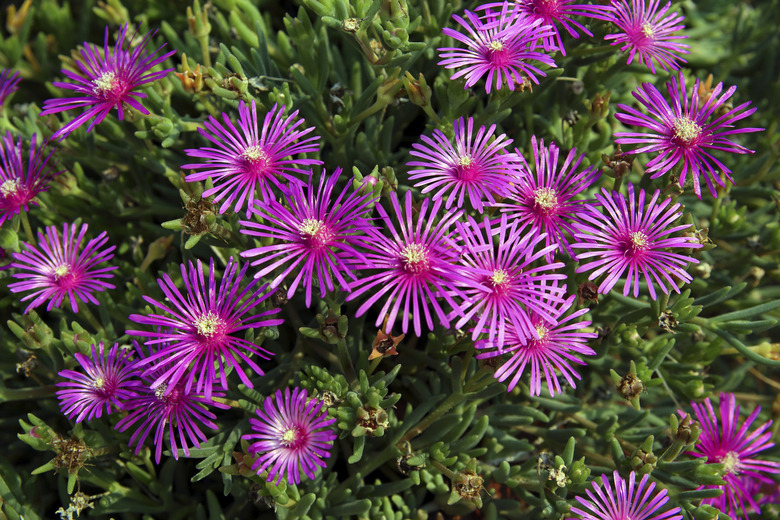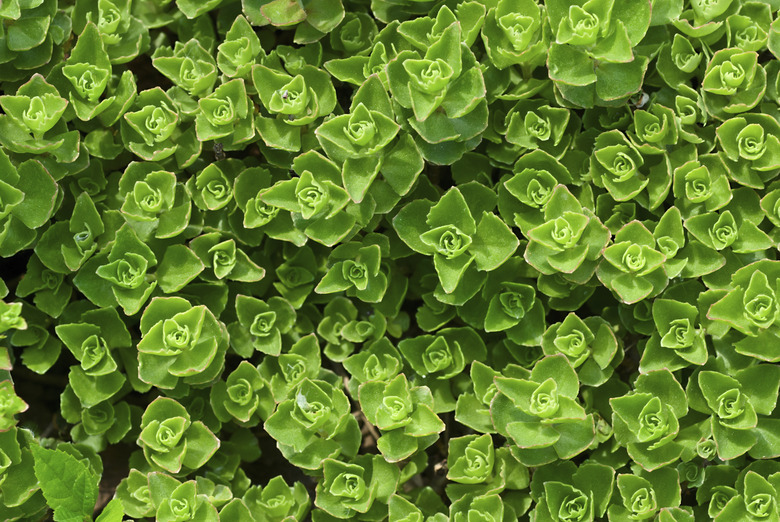Landscape Succulents In Zone 7
Growing zone 7 on the U.S. Department of Agriculture plant hardiness zone map stretches from Massachusetts and Delaware on the East Coast down through Arkansas into Texas and back up the West Coast into Washington state. Landscape succulents must be able to survive winter temperatures down to zero degrees Fahrenheit to survive reliably in this zone. Selecting cold-hardy succulents is a start for USDA zone 7 gardeners, but other factors must also be considered.
Step 1
Before purchasing landscape succulents hardy through USDA zone 7, confirm your correct growing zone. The USDA Plant Hardiness Zone Map divides the country into zones based on winter extremes. Some areas are finely divided into small neighboring zones with different growing parameters. Cities sometimes create heat islands that form warmer growing zones. The USDA website provides an interactive map for ease in locating your zone. Your local county Extension office and local garden centers can help as well. Consider choosing succulents hardy to USDA zone 6 or colder for added insurance of their survival.
Step 2
- Before purchasing landscape succulents hardy through USDA zone 7, confirm your correct growing zone.
- The USDA Plant Hardiness Zone Map divides the country into zones based on winter extremes.
Agaves for Landscapes
Step 1
Many agave (Agave spp.) plants suit USDA zone 7. These landscape succulents generally grow long, pointed leaves from a rosette base. Give them fast-draining, sandy or gravelly soils and at least six to eight hours of direct sunlight each day. Agaves reproduce by forming offsets — small side plants — then they often flower and die. Fading parent plants should be removed to give offsets room to grow. Parry's agave (Agave parryi huachucensis), also known as the hardy century plant, flourishes in USDA zones 6 through 8. Its foliage grows 1 1/2 to 2 feet tall with wide, gray-green leaves and pink flower buds that open to bright yellow.
Step 2
Step 3
- These landscape succulents generally grow long, pointed leaves from a rosette base.
Garden Ice Plants
Step 1
Ice plants (Delosperma spp.) are low-growing, ground cover succulents that produce brightly colored, daisy-like flowers all summer. They prefer dry sandy or gravelly soil that drains well and at least six to eight hours of direct sunlight each day. Cooper's ice plant (Delosperma cooperii), hardy from USDA zones 6b through 10, grows to 6 inches tall and spreads 2 feet wide with shiny, purple flowers. "Starburst" ice plant (Delosperma floribundum "Starburst") grows to 3 inches tall and 1 1/2 feet wide, with dark lilac, white-centered blooms. It is hardy from USDA zones 6 through 8.
Succulent Sedums
Step 1
Sedums (Sedum spp.), also known as stonecrops, are landscape succulents available with various foliage, bloom colors, heights and growth habits. Generally drought tolerant, they prefer sandy or rocky soil with full sun exposure. "Chocolate Drop" stonecrop (Sedum "Chocolate Drop"), hardy in USDA zones 4 through 8, grows 1 foot tall and 1 1/2 feet wide with dark-green to chocolate-brown foliage and rose-pink summertime blooms. "Murale" white stonecrop (Sedum album subsp. teretifolium "Murale"), hardy from USDA zones 3 through 9, is a ground cover that grows 3 inches tall and 9 inches wide. It blooms in white throughout late spring and early summer.
Step 2
Step 3
- Ice plants (Delosperma spp.)
- Starburst" ice plant (Delosperma floribundum "Starburst") grows to 3 inches tall and 1 1/2 feet wide, with dark lilac, white-centered blooms.
References
- U.S. Department of Agriculture: USDA Plant Hardiness Zone Map
- University of Arizona Cooperative Extension: Agave Parryi Huachucensis
- Missouri Botanical Garden: Delosperma Cooperi
- Missouri Botanical Garden: Delosperma Floribundum "Starburst"
- Missouri Botanical Garden: Sedum "Chocolate Drop"
- Missouri Botanical Garden: Sedum Album Subsp. Teretifolium "Murale"



